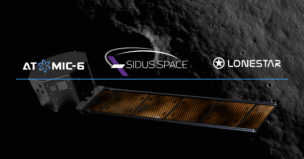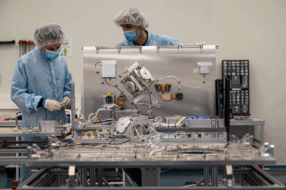Pale Blue, a Japanese startup developing water-based propulsion systems for satellites, announced an agreement with D-Orbit yesterday to demonstrate the technology on two missions in 2025.
The agreement will bring Pale Blue’s 1U+ Water Ion Thruster to space aboard D-Orbit’s ION Satellite Carrier—scheduled to launch in June and October.
It runs on water, man: There’s never been a wider variety of propulsion systems available to satellite operators. As the orbital freeways get more congested, these systems can help to avoid debris, leaving enough juice to deorbit sats at the end of their lifespans.
However, Pale Blue’s system intends to make that technology as environmentally friendly as possible, without sacrificing capability.
Using water as a propellant means companies won’t have to deal with the challenges that come from handling toxic fuel propellants on Earth. At less than 2kg, the system boasts a total impulse of 7,000 Ns, giving satellites enough thrust to perform multiple maneuvers on orbit without sacrificing much bus space.
Multiple thrusters can also be clustered together to provide additional thrust for larger sats or more dynamic maneuvers.
Ocean of opportunity: For Italian startup D-Orbit, the agreement marks the company’s entrance into the Japanese space market, which it hopes will flourish in the years to come.
“As our first collaboration with a Japanese company, this contract highlights our commitment to strengthening ties within Japan’s advanced space sector and expanding D-Orbit’s reach in the Asia-Pacific region,” said D-Orbit’s Sales Development Manager Ash Takao in a statement.




